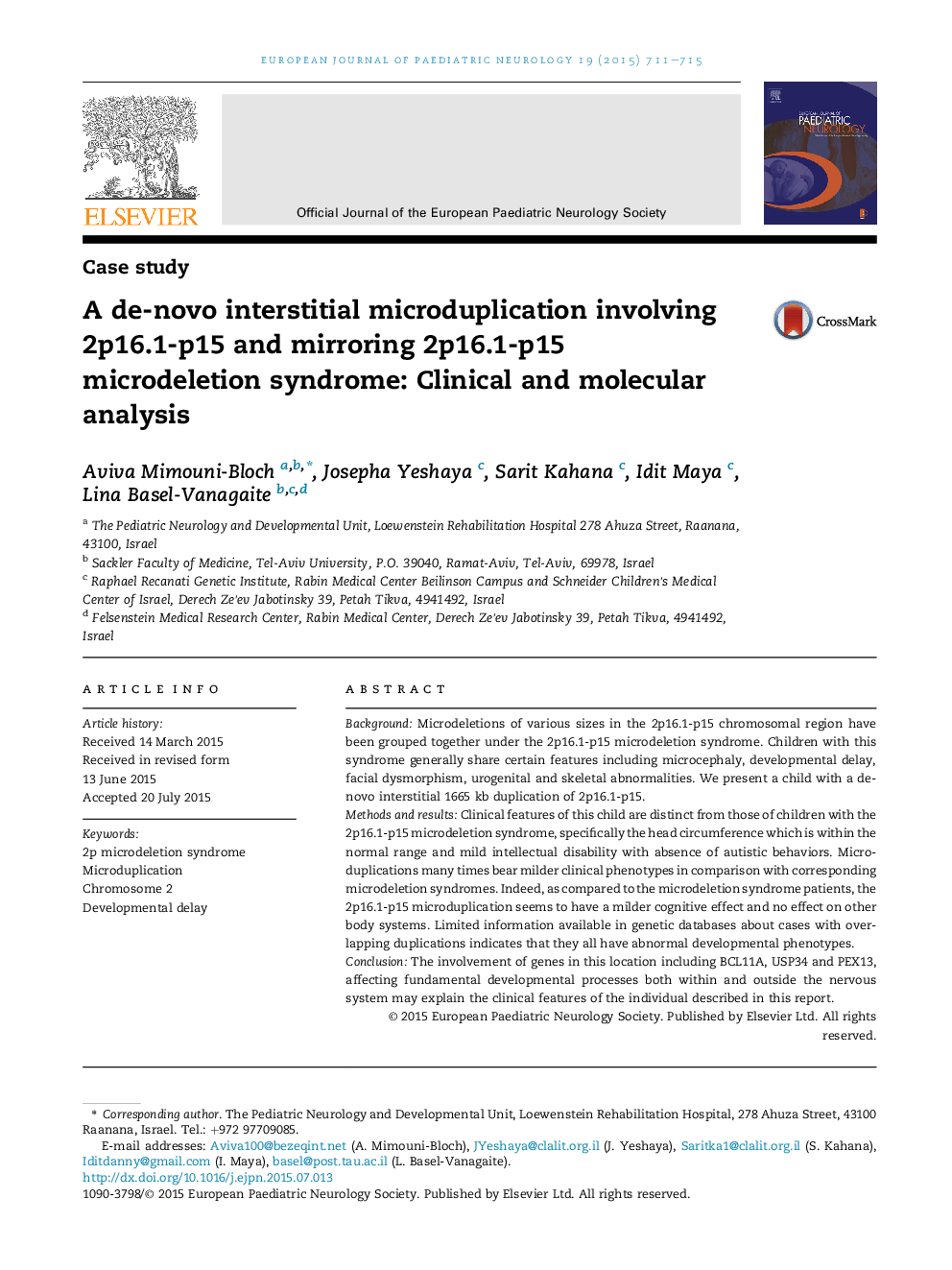| Article ID | Journal | Published Year | Pages | File Type |
|---|---|---|---|---|
| 3053603 | European Journal of Paediatric Neurology | 2015 | 5 Pages |
•We present a child with a de-novo interstitial 1665 kb duplication of 2p16.1p15.•This child differs from children with the 2p16.1p15 microdeletion syndrome.•Clinical features include puffy eyelids, broad philtrum and right earlobe sinus.•The child has mild intellectual disability with an absence of autistic behaviors.•The duplicated genes, including BCL11A, USP34 and PEX13, may explain the phenotype.
BackgroundMicrodeletions of various sizes in the 2p16.1-p15 chromosomal region have been grouped together under the 2p16.1-p15 microdeletion syndrome. Children with this syndrome generally share certain features including microcephaly, developmental delay, facial dysmorphism, urogenital and skeletal abnormalities. We present a child with a de-novo interstitial 1665 kb duplication of 2p16.1-p15.Methods and resultsClinical features of this child are distinct from those of children with the 2p16.1-p15 microdeletion syndrome, specifically the head circumference which is within the normal range and mild intellectual disability with absence of autistic behaviors. Microduplications many times bear milder clinical phenotypes in comparison with corresponding microdeletion syndromes. Indeed, as compared to the microdeletion syndrome patients, the 2p16.1-p15 microduplication seems to have a milder cognitive effect and no effect on other body systems. Limited information available in genetic databases about cases with overlapping duplications indicates that they all have abnormal developmental phenotypes.ConclusionThe involvement of genes in this location including BCL11A, USP34 and PEX13, affecting fundamental developmental processes both within and outside the nervous system may explain the clinical features of the individual described in this report.
